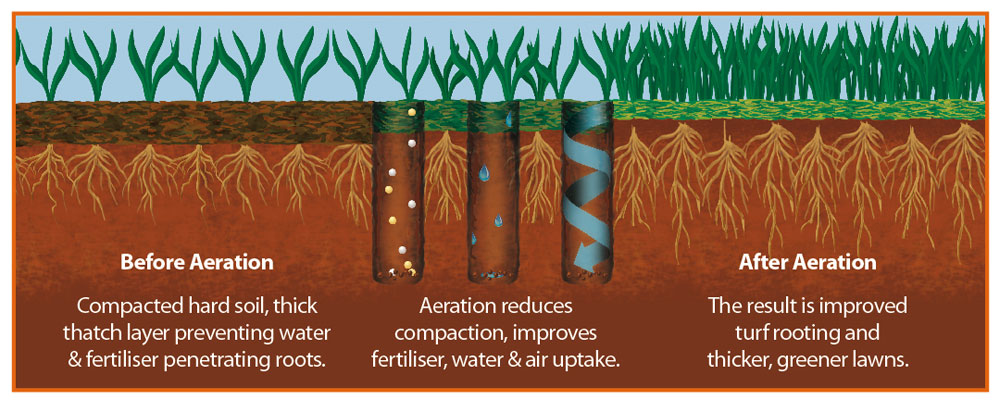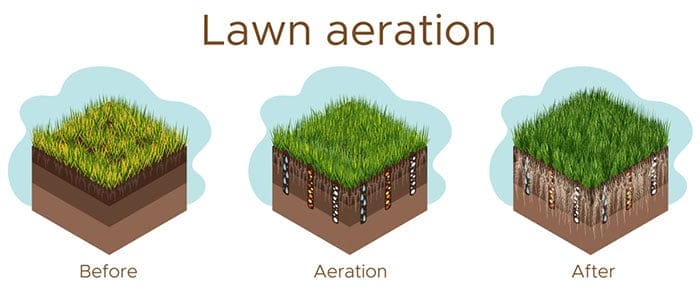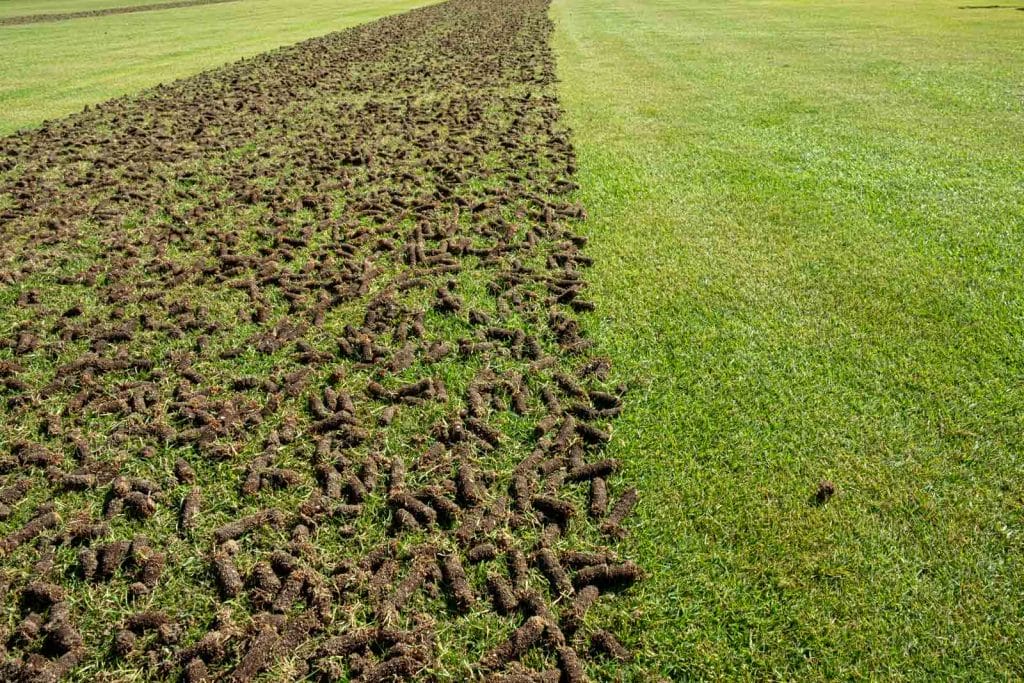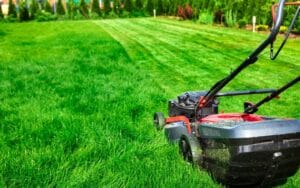Aeration is a vital yet often overlooked aspect of lawn care. A lush, green lawn is the envy of every homeowner. But achieving that picture-perfect lawn requires more than just watering and mowing. It requires understanding the importance of aeration. In this blog post, we’ll delve into the world of aeration, exploring what it is, why it matters, and how it can transform your lawn into a verdant paradise.
Aeration is the process of perforating the soil with small holes to allow air, water, and nutrients to penetrate deep into the grassroots. Over time, soil can become compacted due to factors like foot traffic, heavy machinery, and natural settling. This compaction restricts the flow of air, water, and nutrients to the grassroots, hindering their growth and overall health.

Compacted soil creates a hostile environment for grassroots, making it difficult for them to establish and thrive. Without proper aeration, your lawn may suffer from issues such as:
Aeration offers a multitude of benefits for your lawn, including:

The best time to aerate your lawn depends on the type of grass you have and your local climate. Generally, cool-season grasses like Kentucky bluegrass and fescue benefit from aeration in the early fall or spring, while warm-season grasses like Bermuda grass and zoysia grass should be aerated in late spring or early summer.
There are two primary methods of aerating your lawn: core aeration and spike aeration.
Core Aeration: This method involves removing small plugs or cores of soil from the lawn, typically using a specialized aerator machine. Core aeration is the most effective way to alleviate soil compaction and promote healthy root growth.
Spike Aeration: Spike aeration involves puncturing the soil with solid tines or spikes to create holes for air and water penetration. While spike aeration is less invasive and cheaper than core aeration, it may not provide the same level of soil loosening and compaction relief.


Now that you understand the importance of aeration let’s dive deeper into the aeration process itself.
Assess Your Lawn: Before aerating, assess your lawn’s condition to determine if it’s suffering from soil compaction. Signs of compacted soil include standing water, thin grass, and difficulty inserting a screwdriver or probe into the ground.
Choose the Right Equipment: Select the appropriate aeration equipment based on your lawn’s size and condition. For small to medium-sized lawns, a manual or rental core aerator is sufficient. For larger lawns or severe compaction, consider hiring a professional with commercial-grade equipment.
Prepare Your Lawn: Water your lawn thoroughly a day or two before aerating to soften the soil and make it easier for the aerator to penetrate. Mark any obstacles like sprinkler heads or buried utilities to avoid damaging them during aeration.
Aerate Your Lawn: Follow the manufacturer’s instructions for operating the aerator, ensuring that you cover the entire lawn area evenly. For core aeration, make multiple passes over the lawn in different directions to maximize soil penetration.
Leave the Cores: After aerating, leave the soil cores on the lawn to break down naturally. Over time, rain, irrigation, and microbial activity will incorporate the cores back into the soil, further enhancing its structure and fertility.
Overseed (Optional): If your lawn has thin or bare areas, consider overseeding immediately after aeration to promote new grass growth. The aerated soil provides an ideal environment for seed germination and establishment.
Water and Fertilize: After aerating, water your lawn deeply to help the soil cores break down and encourage grassroots to penetrate deeper into the soil. Follow up with a balanced fertilizer application to provide essential nutrients for optimal turf growth.
Aeration is the key to unlocking the full potential of your lawn, promoting healthy root growth, lush turf, and overall vitality. By understanding the importance of aeration and incorporating it into your lawn care routine, you can transform your yard into a verdant oasis that’s the envy of the neighborhood. So, don’t overlook the power of aeration—your lawn will thank you for it!
Share this post:
Related posts:
